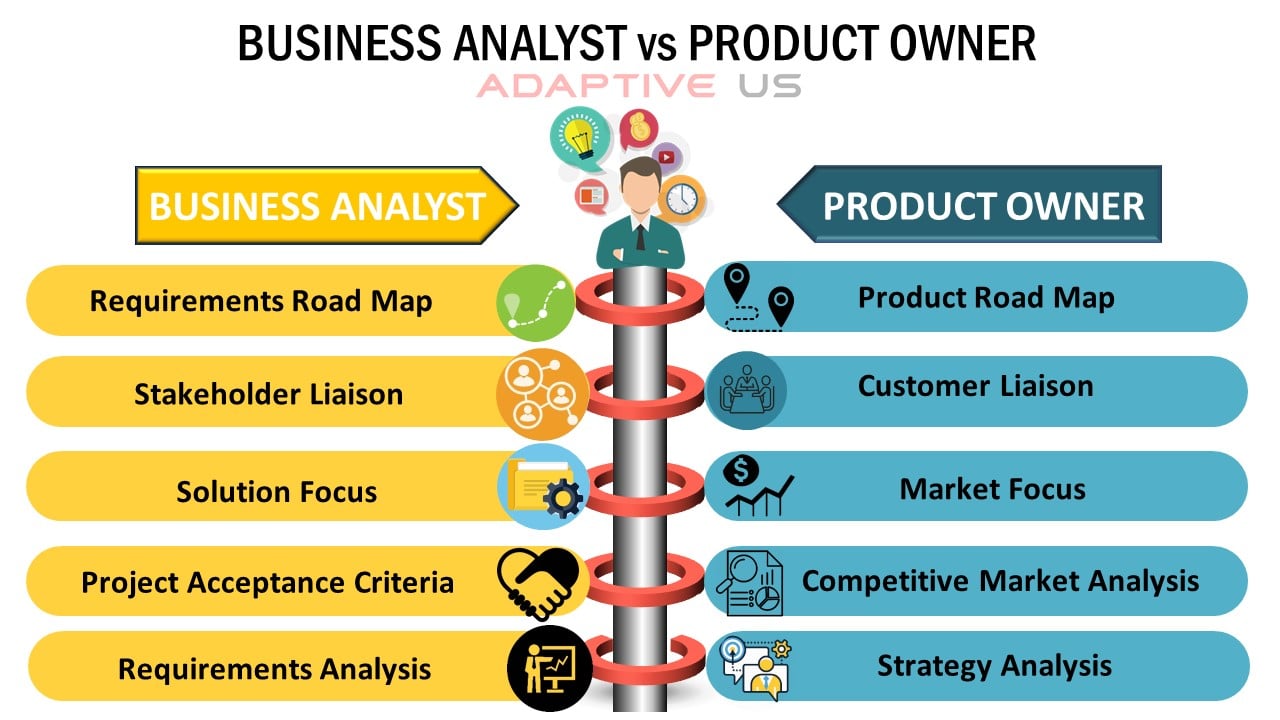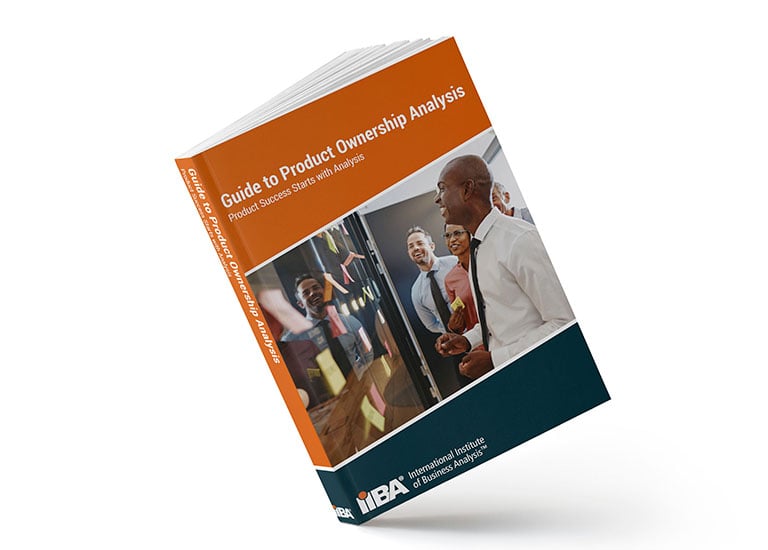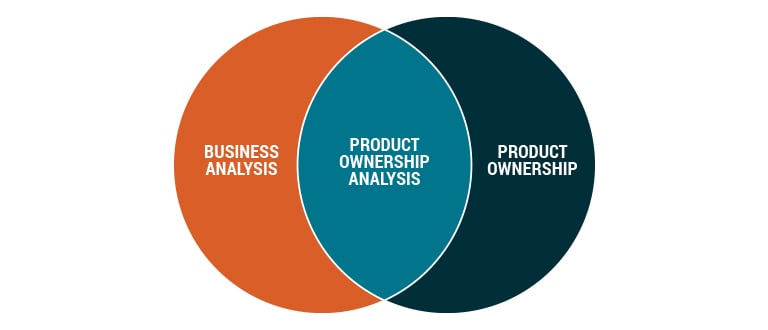Product Owner vs. Business Analyst - Demystifying the Ambiguities
Receive free IIBA updates and exclusive content!
Agile projects, due to the short cycles of delivery, require a collaborative team, substantial leadership support, and a robust, agile culture to be in place to be called as working and successful. The two key pillars for a successful Agile project are the Product Owner (PO) and the Business Analyst.
The Product Owner works almost like the director of a movie, envisioning the macro and micro-level details for the product. At the same time, the Business Analyst ensures smooth execution of the sprint and manages the epics and stories' details.

However, there are many ambiguities between these two roles due to some overlap of skills and responsibilities. Let us look at both the roles to seek the similarities and differences.
1. Product Owner
The Product Owner has a vision of the product keeping the domain/industry experience and the market need. Their job is to ensure that the product meets the market and stakeholder needs; they conduct market analysis followed by an enterprise SWOT analysis to come up with the product vision.
The PO also works on the go-to-market strategy for the product. The PO tries to leverage their experience in the domain, need of the market, the industry or the domain, the organization's market position, and the customer expectation of the product.
Critical Responsibilities for Product Owner
- Market Analysis
- Analysis of market need/demand
- Availability of similar products in the market
- Underserved customer needs
- Potential trends in synergy with current offerings

- Enterprise Analysis
- SWOT analysis
- Due diligence on the market opportunity
- Product offering decision based on the due diligence report
- Product Vision and Roadmap
- Product vision keeping the need analysis in mind
- Product roadmap with high-level features and timeline

- Go to Market Strategy
- Go to market strategy
- Marketing messaging/communications
- Channels of marketing
- Modes of advertising

- Managing Product Features
- Managing stakeholder expectations and prioritizing needs
- Prioritization of the epics, stories, and features based on criticality and ROI involved
The PO works closely with the stakeholders and the Business Analyst in giving more details about the product.

- Managing Product Backlog
- Prioritization of user stories
- Reprioritization based on stakeholders' needs
- Epics planning
- Managing Overall Iteration Progress
- Sprint progress review
- Reprioritization of sprints and epics if needed
- Sprint retrospectives with Business Analyst
2. Business Analyst
As we know, Business Analysts are the change-makers, problem solvers, questioners, facilitators, the bridge between the users/stakeholders and the Agile team. They question assumptions and requirements, assess the needs, find gaps, and work closely with the stakeholders/SMEs to detail the requirements, features, user stories, and understand/elicit the requirements. They work closely with the Product Owners to manage the user stories and epics.
- Requirements modeling and elicitation
- Data flow diagrams
- Business rules
- Dependency mapping
- Smooth execution of the sprints
- Requirements clarification to the team
- Maintaining the dependency map and the traceability matrix.
- Facilitation support for users in UAT
The Business Analyst role supports the Product Owner in delivering detailed artifacts. Often the Business Analyst is considered a Proxy Product Owner. This allows the Agile team to have a higher amount of access to the Product Owner's perspectives.
Critical Responsibilities for Business Analysts
- Managing User Stories
- Prioritizing the user stories
- Clearing the impediments if any

- Detailing the Requirements as per the Stakeholders’ Needs and Expectations
- Requirements elicitation
- Business rules
- Modeling
- Requirements walkthroughs
- Requirements workshops
- Acceptance criteria

- Clarifying the details of requirements with stakeholders
- Coordinating with the development team to get the stories developed
- Day to day support in requirements clarifications and business rules
- SPOC for the agile team for all requirements related queries
- Impact Analysis for Changes
- Maintaining the traceability matrix and dependencies.
- Components mapping
- Impact analysis for changes
- Work closely with the PO on the Sprint Execution
- A representative of the PO in the Agile team in clarifying questions and issues.
- Assists the PO in managing the sprint and the product backlog
- Take a lead role in the sprint retrospectives

3. Final Thoughts
There is indeed a fair amount of overlap of skills and responsibilities between these two roles. As the name indicates, a Product Owner works like an owner of the product, envisioning almost every detail of the product and how to make it market ready. On the other hand, the Business Analyst gives colors to the vision and makes it a reality. But the lines get somewhat blurred sometimes. Here is a simple Venn diagram depicting the tasks, responsibilities and the skills involved for both roles.

Good collaboration or teamwork is like a happy marriage where things run smoothly, the needs are taken care of without stressing about it, and happiness is delivered. The same thing applies in an Agile team, between the Product Owner and the Business Analyst role. They are required to work closely to push it to a successful release to the market.

Like all other partnerships, this also becomes successful with a close collaboration between both roles. The better the two roles collaborate, the better value delivered, and the better managed the Agile team and the sprint is. Being a Product Owner with sound domain knowledge helps put across the right features. An experienced Business Analyst helps in excellent sprint execution and perfect collaboration between the numerous stakeholders and the Agile team.
To summarize, the Product Owner manages the “big picture” of the market expectations and the product. The Business Analyst manages the close monitoring and executions of the sprint, thereby delivering great products and building winning teams. The result is a winning product and a happy and successful agile team!
It’s so important to have the right techniques, skills, and competencies in Product Ownership whether you’re working as a Product Owner or Business Analyst. Uncover the framework, context, techniques, and competencies that can give you an advantage in the Guide to Product Ownership Analysis. Learn More.
Product Ownership Analysis - What You Need to Know
Guide to Product Ownership Analysis
As organizations transition from project-centric models to a product-centric view, it is important to understand how product ownership is evolving and how business analysis professionals can drive the delivery of successful products.
Key Features Include:
- Integrating product ownership and business analysis
- Understanding roles and responsibilities in product management
- Applying Agile and product ownership analysis
- More than 50 case study examples
- Over 25 techniques for applying POA
Uncover the framework, context, techniques, and competencies that can give you an advantage.

About The Author:

Ann heads the global sales and marketing role at Adaptive US Inc. She is also a coach and mentor to thousands of BAs in their pursuit of achieving IIBA certifications. Her mission is to help business analysts to start and build a successful professional career. She is a regular author, blogger on various Business analysis, management and technology related topics in leading tech sites and journals.
She is a passionate entrepreneur and a strong supporter of encouraging women workforce in technology and has helped many women to come back to work after long career breaks. She has co-founded Adaptive US, a Business analysis skill development organization. Adaptive US has established itself as a global leader in the Business analysis skill development domain with students and corporates from 80+ countries under her dynamic leadership. Learn more about earning your CBAP certification with Adaptive here.
Please write to her if you love reading her articles or if they ignite the fire in you.
You can reach her at Ann@Adaptiveus.com
LinkedIn Profile - www.linkedin.com/in/ann~
Website - www.AdaptiveUS.com


